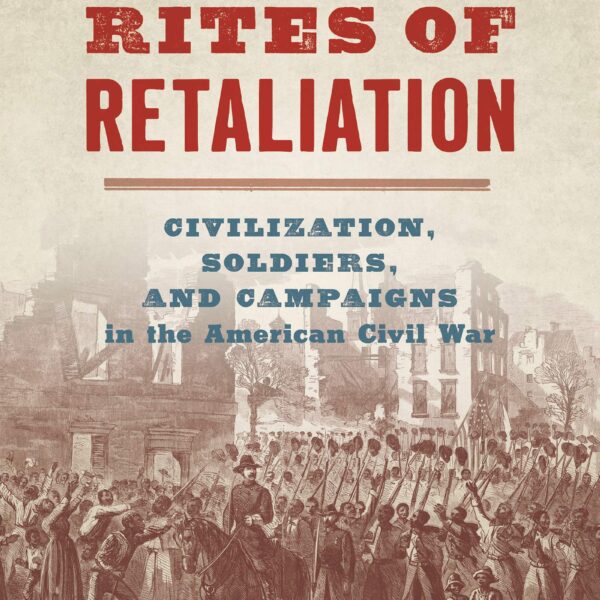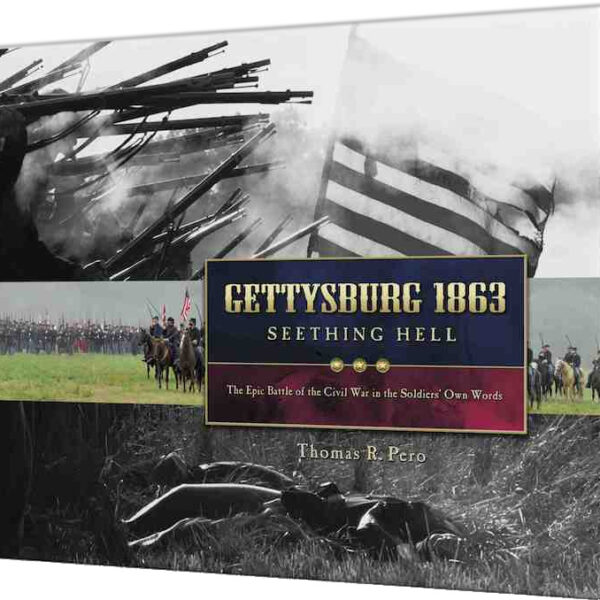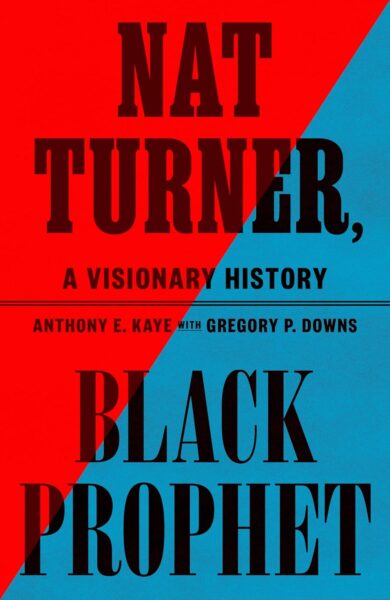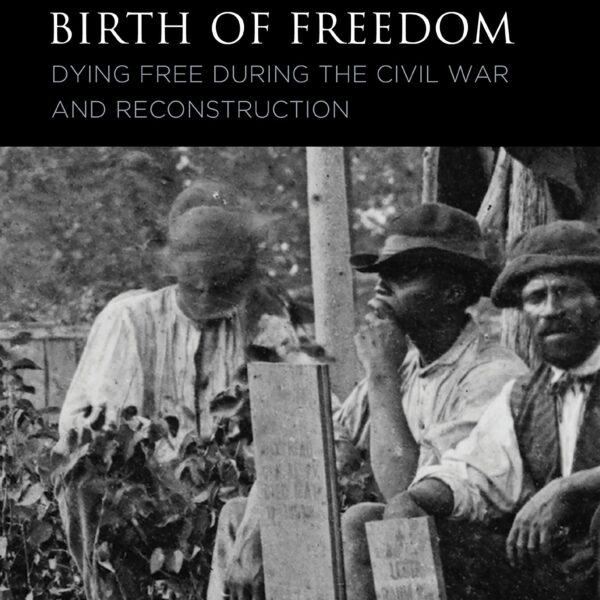The Gettysburg Address: Perspectives on Lincoln’s Greatest Speech edited by Sean Conant. Oxford University Press, 2015. Paper, ISBN: 978-0190227456. $24.95.
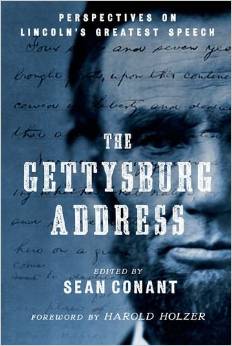 Sean Conant has amassed an impressive array of contributors for this work, which grew out of his forthcoming documentary on the Gettysburg Address. Few of the essayists would identify themselves as “Lincoln scholars”; rather, they bring expertise from other areas and eras. The result is a broad contextual examination of the influences upon and impacts of the Gettysburg Address.
Sean Conant has amassed an impressive array of contributors for this work, which grew out of his forthcoming documentary on the Gettysburg Address. Few of the essayists would identify themselves as “Lincoln scholars”; rather, they bring expertise from other areas and eras. The result is a broad contextual examination of the influences upon and impacts of the Gettysburg Address.
Part I considers “Influences” on the speech. The first three essays all explicitly tackle assertions made by Garry Wills in Lincoln at Gettysburg. “Rather than setting Lincoln’s words in the context of Athenian funeral oratory,” Nicholas Cole suggests, “it is perhaps more natural to explain both the form of Lincoln’s words and their popular reception at the time in the context of the Fourth of July orations that would have been immediately familiar to both Lincoln and his audience” (4). Indeed, Lincoln’s call for popular government was a rejection of classical politics. Robert Forbes, in an excellent essay, contends that Lincoln was not trying to “trick” the people by asserting the primacy of the Declaration of Independence; rather, “Lincoln’s words at Gettysburg can be seen not as an exercise in deception, but as a return to first principles” after years of failed compromises (24). Sean Wilentz agrees, noting, “The idea that the Declaration contained the nation’s fundamental political principles had been a staple of antislavery politics at least since the outbreak of the Missouri crisis in 1819” and was not new in 1863 (51). Wilentz further argues that at Gettysburg, Lincoln announced “a third transcendent war aim—saving democracy—that to achieve required crushing secession and freeing the slaves” (52).
Two subsequent essays discuss the influences of Daniel Webster and Theodore Parker upon the speech as a whole, and Lincoln’s final line, “government of the people, by the people, for the people,” in particular. Craig Symonds notes that Webster’s “Reply to Hayne” in 1830 (in which he asserted, “It is Sir, the people’s Constitution, the people’s government, made for the people, made by the people, and answerable to the people”) argued for the supremacy of the people over the states, and thus “was a touchstone for American nationalists like Lincoln” (73). But Dean Grodzins contends that it was abolitionist Theodore Parker’s line—“government of all, by all, for all”—which most likely influenced Lincoln (88).
Mark Schantz and Chandra Manning look at wartime influences. Schantz argues that Lincoln “transformed America’s engagement with death” by claiming “the dead at Gettysburg belonged fully to the American nation, not to their families,” and by giving the deceased a purpose in this life rather than the next (107). Manning suggests that by 1863 shared suffering was, to quote one soldier, “abolitionizing the whole army,” and that both Lincoln and the soldiers saw the need for a new government (129). There were few reactions to Lincoln’s speech, she argues, “because it repeated shared rather than novel insights” (140).
After narrating the events in Gettysburg, Allen C. Guelzo begins the transition to the “Impacts” of the speech by positing two reasons for the speech’s immediate resonance. First, Lincoln eschewed the classical language and allusions favored by most orators—like Edward Everett— and instead used the middling language of the people. But, in a loftier sense, “The genius of the Address lay… in its triumphant repudiation of the criticisms of democracy, and in the new birth it gave to those who had become discouraged and wearied by democracy’s follies” (164).
Louis Masur positions the Gettysburg Address as the continuation of the Emancipation Proclamation, and as the assurance that Lincoln would not retract that act. By the fall of 1863 Lincoln was still defending emancipation, but also pressing for outright abolition at the state level. George Rutherglen agrees, noting that the Gettysburg Address offers a glimpse into Lincoln’s Reconstruction policy, and that the three Reconstruction amendments are the fulfillment of the principles of the speech. The 13th Amendment comes from “a new birth of freedom,” the 14th from “all men are created equal,” and the 15th from “a government of the people, by the people.”
Essays by Alison Efford, Jean Baker, and Raymond Arsenault consider the Gettysburg Address as it relates to immigrants, women, and civil rights, respectively. Efford argues that “the men who immigrated from Europe to North America before the Civil War influenced Lincoln, with the president refining his ideas of equality while courting their votes and rebuffing their critics” (212). Baker notes that Lincoln’s call for “a new birth of freedom” opened up possibilities for women, and that women would seize upon his argument for a government “by the people” to assert their right to suffrage. Raymond Arsenault suggests that the Gettysburg Address, with its promise of equality, was the inspiration for and origins of the nation’s civil rights movements. For Arsenault, the Lincoln Memorial and its display of the text of the Gettysburg Address has played a critical role in the civil rights struggle; he focuses on Marian Anderson’s famous concert on the steps of the Memorial in 1939. In each of these essays, the authors note the ways in which Lincoln’s words inspired these groups and provided them with a compelling argument in their search for equality.
Essays by Don Doyle and Thomas Desjardin catalog ways the speech has been invoked and interpreted, used and misused, internationally (Doyle) and domestically (Desjardin). Doyle notes that Lincoln made the speech of international interest by positing the Civil War as a test of democracies the world over. Desjardin posits that the speech resonates because it is perceived to illustrate American exceptionalism.
It is a sign of the overall strength of the collection that at least a half-dozen of the essays could vie for the “best” moniker. Some advance no new arguments but instead summarize notions already in circulation. Others offer interesting new insights and even new research. One disappointing feature is the abrupt ending of the book without a conclusion or afterword. Despite this quibble, the book is well worth reading for either the novice or expert.
Jared Peatman is a leadership consultant and the author of The Long Shadow of Lincoln’s Gettysburg Address.
